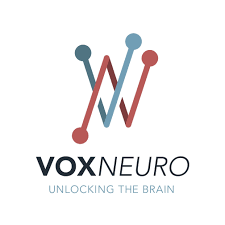The original announcement appeared on voxneuro.com. To read the original post click here.
 Please take a moment to read the white paper below developed by VoxNeuro’s neuroscience team on the neurological consequences of COVID-19. We ask that you consider sharing this white paper and accompanying references with any relevant individuals or groups within your own networks who may benefit from this information. Together, we can play a small role in our collective recovery from this global crisis by ensuring neurological consequences of COVID-19 are addressed.
Please take a moment to read the white paper below developed by VoxNeuro’s neuroscience team on the neurological consequences of COVID-19. We ask that you consider sharing this white paper and accompanying references with any relevant individuals or groups within your own networks who may benefit from this information. Together, we can play a small role in our collective recovery from this global crisis by ensuring neurological consequences of COVID-19 are addressed.
Thank you for your support. To get in touch, please email [email protected] with the subject line “COVID-19 neurological consequences.”
– James Connolly, CEO
Addressing neurological consequences of COVID-19
The world has been overwhelmed by the onslaught of the COVID-19 (a.k.a. SARS-CoV2) virus. As the number of COVID-19 cases continues to climb in Canada, VoxNeuro, like many other companies, has been able to pivot and expand its offerings to aid in the current COVID-19 pandemic. The medical community has shown conclusively that the novel virus crosses the blood-brain barrier and thus, results in neurological consequences that can continue beyond the duration of the illness [1-3]. Prolonged cognitive dysfunctions are a common outcome of such neurological consequences; requiring the need for rapid, objective, and replicable measures of the brain’s cognitive performance both for initial assessment that can guide therapeutic considerations and to track recovery. VoxNeuro’s Cognitive Health Assessments™ (CHAs) provide an accurate, non-invasive, objective measure of an individual’s cognitive function at the neurophysiological level. The reports generated through the CHA are used to create targeted treatment plans specific to each patient’s needs, track cognitive performance over time, and ultimately aid in the acceleration of treatment. To date, VoxNeuro’s Cognitive Health Assessments™ are the only available medical tool that can objectively assess the cognitive consequences of COVID-19. In this respect, VoxNeuro’s CHA complements the valuable information being obtained from CT/MRI scans of the neuroanatomical consequences of COVID-19.
While nations are having varying levels of success in getting ahead of this dangerous virus (as of early April, 2020) there is an equally damaging consequence looming: Front line medical personnel (e.g., intensivists and neurologists) are seeing neurological, consciousness, and cognitive sequelae of COVID-19 in up to 45% of patients (1). This aspect of COVID-19 comes as no surprise to researchers due to evidence that related respiratory syncytial viruses (RSV) have been shown to become neuroinvasive causing behavioral and cognitive (learning, memory) in murine samples (4-6) and humans (7,8) and notably children (15,16). In fact, it has been suggested that the respiratory symptoms in these disorders, and in particular COVID-19, may not cause observed neurological symptomatology but rather the reverse – that is, the respiratory problems may be the result of neurological dysfunction resulting from blood-brain-barrier changes to the virus. There is now incontrovertible evidence that even “lesser” viruses such as the highly contagious influenza virus type A can result in central nervous system involvement and has been associated with Reye’s syndrome, encephalitis, and acute necrotizing encephalopathy (7-12).
Research has demonstrated a specific link between the human coronavirus (strain OC 43) and neurological disease by showing the virus is capable of crossing into the human central nervous system. The same research team hypothesizes that the human coronavirus may cause neurological diseases such as multiple sclerosis, Alzheimer’s disease, Parkinson’s disease, and encephalitis (8). A recent report in the New York Times (April 1, 2020 RC Rabin: Some Coronavirus Patients Show Signs of Brain Ailments) describes an older patient diagnosed as suffering from COVID-19 with structural brain scans indicating regional swelling and inflammation and accompanying cell death. The report states, “The pattern of involvement, and the way that it rapidly progressed over days, is consistent with viral inflammation of the brain, This may indicate the virus can invade the brain directly in rare circumstances.” (see 2 for a report of necrotizing encephalopathy associated with COVID-19 with similar neuroanatomical pathology revealed by CT and MRI).
These U.S. reports make similar observations to those already seen in Italy where the severity of the neurological consequences have led to COVID-19 being described as neurovirulent. Many countries have already begun opening centres designed specifically for the assessment and treatment of the neurological effects of COVID-19. For example, the University of Brescia is not alone in opening a NeuroCovid unit due to the dramatic increase in vascular events including stroke and thrombosis. In China, almost half of those patients with severe respiratory symptoms from COVID-19 also had neurological symptoms, including stroke and abnormalities associated with consciousness. Seventy-eight (36.4%) of 214 patients exhibited neurological symptoms. Those patients classed as severely ill were likely to have neurologic symptoms (45.5%) such as acute cerebrovascular diseases and impaired consciousness (1).
The ability of the VoxNeuro’s Cognitive Health Assessments™ to identify what aspects of cognitive function show a deficit and track cognitive function over time enables VoxNeuro to verify if and when an individual is back to healthy cognitive performance. This subsequently assists with streamlining treatment and ultimately reduces healthcare resources – enabling the healthcare system to continue their focus on the active symptoms of COVID-19. It is also imperative to note that even with the eventual discovery of an established vaccine, and the world returning to its “normal” routine, there will still be thousands of individuals recovering from the virus who will be seeking cognitive rehabilitation. VoxNeuro will be able to inform rehabilitation specialists with the objective data required to accelerate recoveries so individuals can return to the workforce quicker and contribute to the economy sooner in a time of (likely) economic instability.
Finally, the Cognitive Health Assessment™ will be a particularly valuable service to assess patients and assist healthcare professionals in the post-COVID period. For the duration of COVID-19’s demands on our healthcare system, many patients who have sustained mild-to-moderate brain injuries will not have been seen as efficiently as usual within our healthcare system. This situation is unavoidable given the impact of COVID-19 on healthcare facilities as well as the justified restrictions on our movements in cities and towns across the country. For this reason there is anticipated to be a surge of patients and clients in need of healthcare providers. VoxNeuro’s rapid, objective, and clinically relevant Cognitive Health Assessment™ takes 45 minutes to administer and the patient reports are available within 48 hours. VoxNeuro’s streamlined patient pathway will be needed to help facilitate the assessment of large numbers of patients and quickly provide valuable information to health professionals as they make their treatment and care decisions.
Mainstream Media References
- Wired – What Does Covid-19 Do to Your Brain?
- The Globe & Mail – Scientists warn COVID-19 could lead to neurological complications in some patients.
- Psychology Today – Neurological Implications of COVID-19 Raise Concerns.
Scientific References
- Mao, Wang, Chen, … Hu (February 24, 2020). Neurological Manifestations of Hospitalized Patients with COVID-19 in Wuhan, China: A Retrospective Case Series Study. Available at SSRN:https://ssrn.com/abstract=354840
- Poyiadji et al., (online: March 31, 2020). COVID-19–associated Acute Hemorrhagic Necrotizing Encephalopathy: CT and MRI:https://doi.org/10.1148/radiol.2020201187
- Nath, (2020). Neurologic complications of coronavirus infections. Neurology, DOI: 10.1212/WNL.0000000000009455
- Espinoza, Bohmwald, Cespedes, … Kalergis. (2013). Impaired learning resulting from respiratory syncytial virus infection. Proceedings National Academy Sciences USA 110(22):9112–9117. DOI:10.1073/pnas.1217508110
- Beraki, Aronsson, Karlsson, Ogren, & Kristensson. (2005). Influenza A virus infection causes alterations in expression of synaptic regulatory genes combined with changes in cognitive and emotional behaviors in mice. Molecular Psychiatry. 10(3):299–308. DOI: 10.1038/sj.mp.4001545
- Jurgens, Amancherla, & Johnson. (2012). Influenza infection induces neuroinflammation, alters hippocampal neuron morphology, and impairs cognition in adult mice. Journal Neuroscience. 32(12):3958–3968. DOI: 10.1523/JNEUROSCI.6389-11.2012
- Desforges, Le Coupanec, Brison, Meessen-Pinard & Talbot. (2014). Neuroinvasive and Neurotropic Human Respiratory Coronaviruses: Potential Neurovirulent Agents in Humans. In, R. Adhikari and S. Thapa (eds.), Infectious Diseases and Nanomedicine I, 75 Advances in Experimental Medicine and Biology 807, DOI: 10.1007/978-81-322-1777-0_6, Springer India.
- Morfopoulou, Brown, Davies, … Talbot & Breuer. (2016). Human Coronavirus OC43 Associated with Fatal Encephalitis. New England Journal of Medicine, 375 (5): 497 DOI: 10.1056/NEJMc1509458
- Jang, Boltz, Webster, & Smeyne. (2009). Viral parkinsonism. Biochimica Biophysica Acta 1792(7):714–721. DOI:10.1016/j.bbadis.2008.08.001
- Zeng, Wang, & Kang-Sheng. (2013) Influenza virus and CNS infections. In: Singh & Ruzek (eds) Neuroviral Infections. RNA viruses and retroviruses. CRC Press/Taylor and Francis, Boca Raton, pp 325–339. DOI: 10.1007/978-81-322-1777-0
- Wang, Li, Li. (2010) Acute encephalopathy and encephalitis caused by influenza virus infection. Current Opinion Neurology. 23(3):305–311. DOI: 10.1097/wco.0b013e328338f6c9
- Millichap & Millichap. (2006). Role of viral infections in the etiology of febrile seizures. Pediatric Neurology. 35(3):165–172. doi:10.1016/j.pediatrneurol.2006.06.004
- Toovey. (2008). Influenza-associated central nervous system dysfunction: a literature review. Travel Medicine Infectious Disease 6(3):114–124. doi:10.1016/j.tmaid.2008.03.003
- Ozkale, Erol, Ozkale, Demir, & Alehan. (2012). Acute disseminated encephalomyelitis associated with influenza A H1N1 infection. Pediatric Neurology, 47(1):62–64. DOI: 10.1016/j.pediatrneurol.2012.03.019
- Kawashima H, Ioi H, Ushio M, Yamanaka G, Matsumoto S, Nakayama T (2009) Cerebrospinal fluid analysis in children with seizures from respiratory syncytial virus infection. Scand J Infect Dis 41(3):228–231. DOI:10.1080/00365540802669543
- Millichap JJ, Wainwright MS (2009) Neurological complications of respiratory syncytial virus infection: case series and review of literature. J Child Neurol 24(12):1499–1503. DOI:10.1177/0883073808331362






